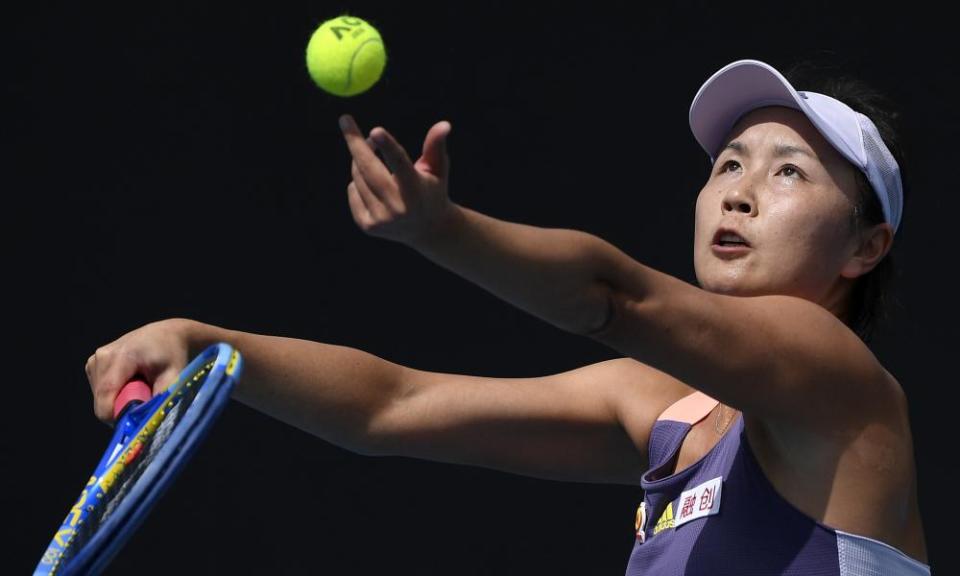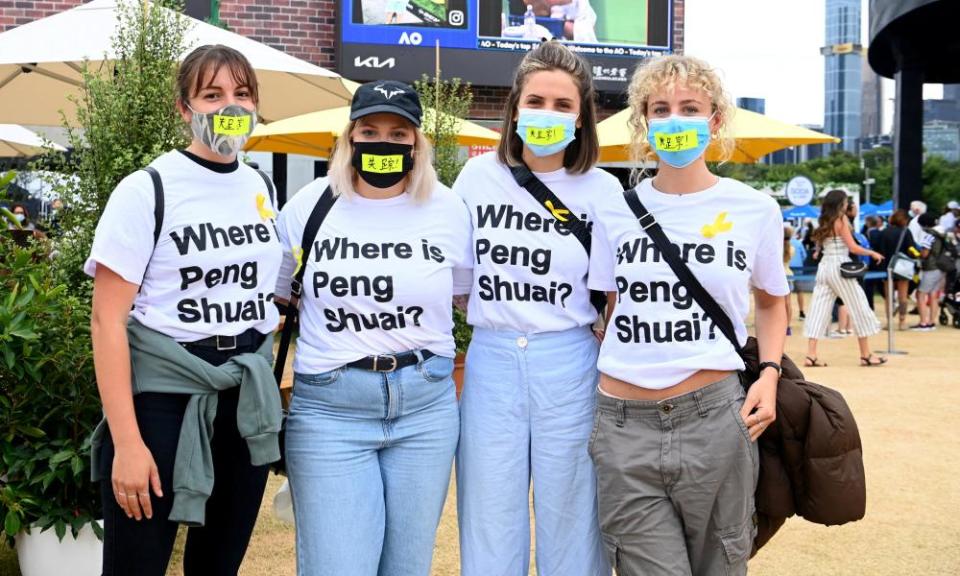Tennis’s support for Peng Shuai has turned to dust with WTA’s China U-turn

As recently as the beginning of March, the conditions set forth by the Women’s Tennis Association for a return to China were piercingly clear: the Tour would not stage any further tournaments in the country until the WTA was able to directly contact Peng Shuai and a transparent investigation was conducted into her claims of sexual assault against the former Chinese vice-premier, Zhang Gaoli.
Steve Simon, the WTA’s chief executive, often divides opinion but in a difficult period for the organisation, his backbone and the consistency of his message in response to Peng’s Weibo post in November 2021 had received plaudits.
Related: WTA will return to China after ending boycott over Peng Shuai concerns
That message has crumbled to dust. The WTA’s decision to return to China is clearly a U-turn and a dramatic departure on its previous approach.
It was also predictable. Despite the positive response Simon and the WTA have received for being essentially the only sport to make a reasonable stand against China, many had also digested Simon’s stance with a healthy amount of scepticism.
As strong as its message was, the WTA’s boycott of China occurred at a time when international sporting events were not taking place in China due to the country’s strict Covid-19 protocols. In 2022, the WTA waited until late in the season to confirm its autumn calendar, meaning a late scramble to find a venue for the WTA Finals, which was eventually held in Fort Worth, Texas.
This year was the first that the WTA would have had to actively boycott tournaments held in China. Instead they have returned at the first opportunity.
It is no surprise that the WTA could not stay away from a country with which it has become intertwined. Twelve years ago, when Li Na became China’s first grand slam champion by winning the 2011 French Open, China rapidly became the centre of the WTA’s plans for growth.
The final months of the season were quickly transformed, eventually shaping a landscape dominated by Chinese events. In the last full season before Covid struck, nine events took place in China alone, and they accounted for more than $30m in prize money. The season ended with the WTA Finals in Shenzhen, where the champion, Ash Barty, earned a record $4.42m in prize money.
The combined effects of Covid and the absence of the Chinese swing are reflected in the massive hole in the WTA’s balance sheet for 2020, its most recent tax filings. After making revenues of $109,733,686 with an operating loss of $1m in 2019, its revenue in 2020 was $37,666,082 with an operating loss of $16.5m. By comparison, the ATP’s revenue also fell significantly in 2019 but, among many other reasons, their lack of reliance on Chinese events meant that profit actually increased by $1m to $16m.

The past two years have further crippled the WTA, with prize money at some tournaments waning and the gap between the ATP and WTA widening. There are also fewer tournaments for lower ranked players.
The WTA Finals, which the former CEO Stacey Allaster once called the “financial engine” of the Tour, normally accounts for a significant percentage of the WTA’s revenues. While Shenzhen’s 2019 edition provided $14m prize money and far more, last year the WTA were forced to supply the $5m and many more expenses from their own pockets just to keep their flagship event running.
At a time when governments and much larger organisations balk at China, the prospect of a small tennis organisation forcing one of the most powerful nations in the world to succumb to its demands was always unlikely.
The WTA will return to China without sufficient answers. Peng was a constant figure on the Tour from 2002 until the Covid hiatus in 2020, but the WTA has apparently been unable to directly contact her for two years.
In one of her few public interactions since the events, an interview with L’Equipe at the Winter Olympics was conducted under significant constraints. Peng, who is fluent in English, answered only in Chinese while surrounded by members of the Chinese Olympic committee who had received questions in advance.
As the tours return to China this year, there will be reason to reflect on Chinese tennis enjoying another fine moment, this time with the emergence of top-level men’s players led by Wu Yibing alongside 20-year-old women’s prospect Zheng Qinwen. The excitement is reflected on social media where China’s vast group of tennis fans enthusiastically support both their players and many others, even dreaming up hilarious, creative nicknames.
But one figure is missing: two years later, a Weibo search of one of China’s most successful and popular players, Peng, still yields no results.

 Yahoo Sport
Yahoo Sport 





































